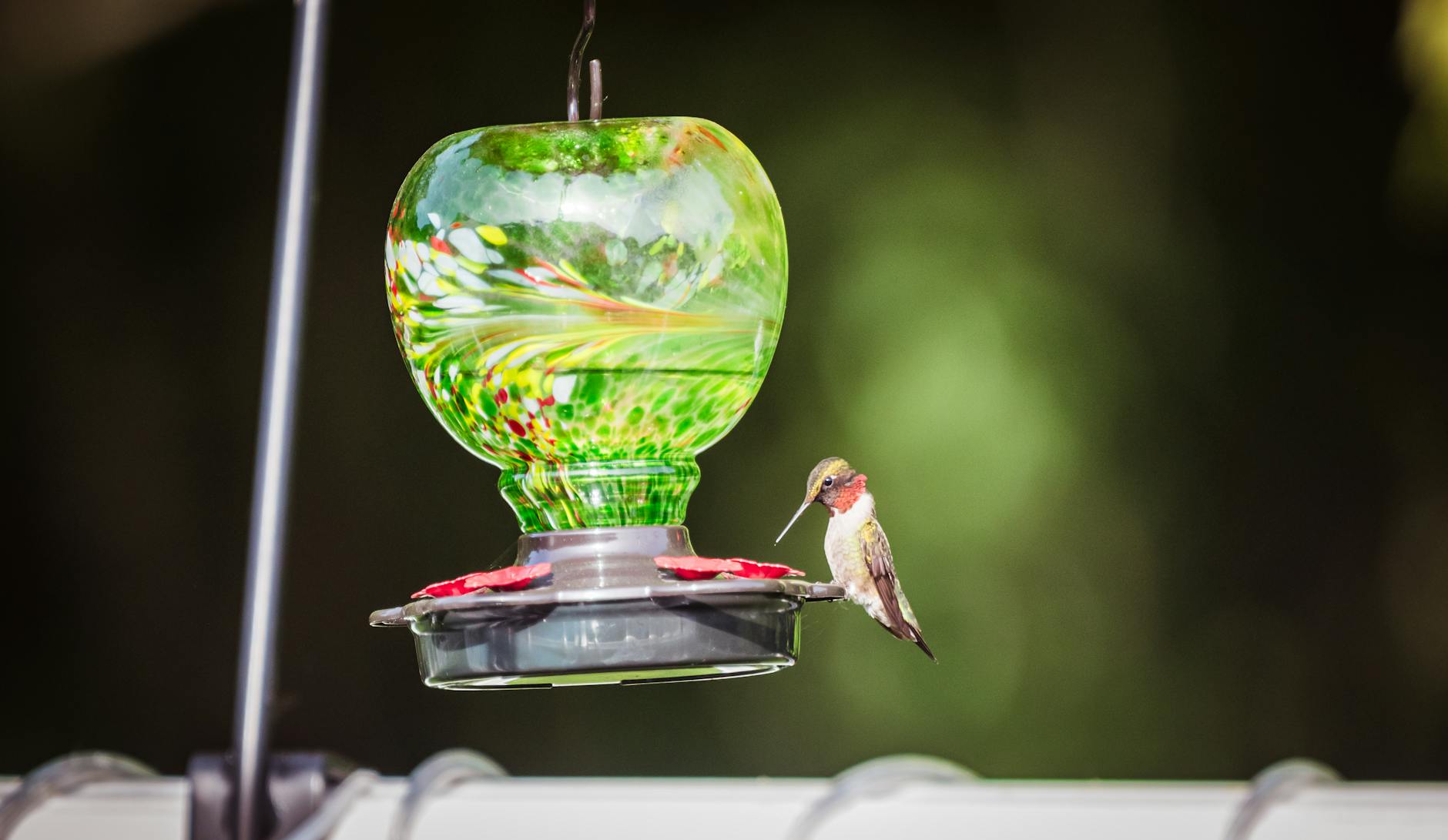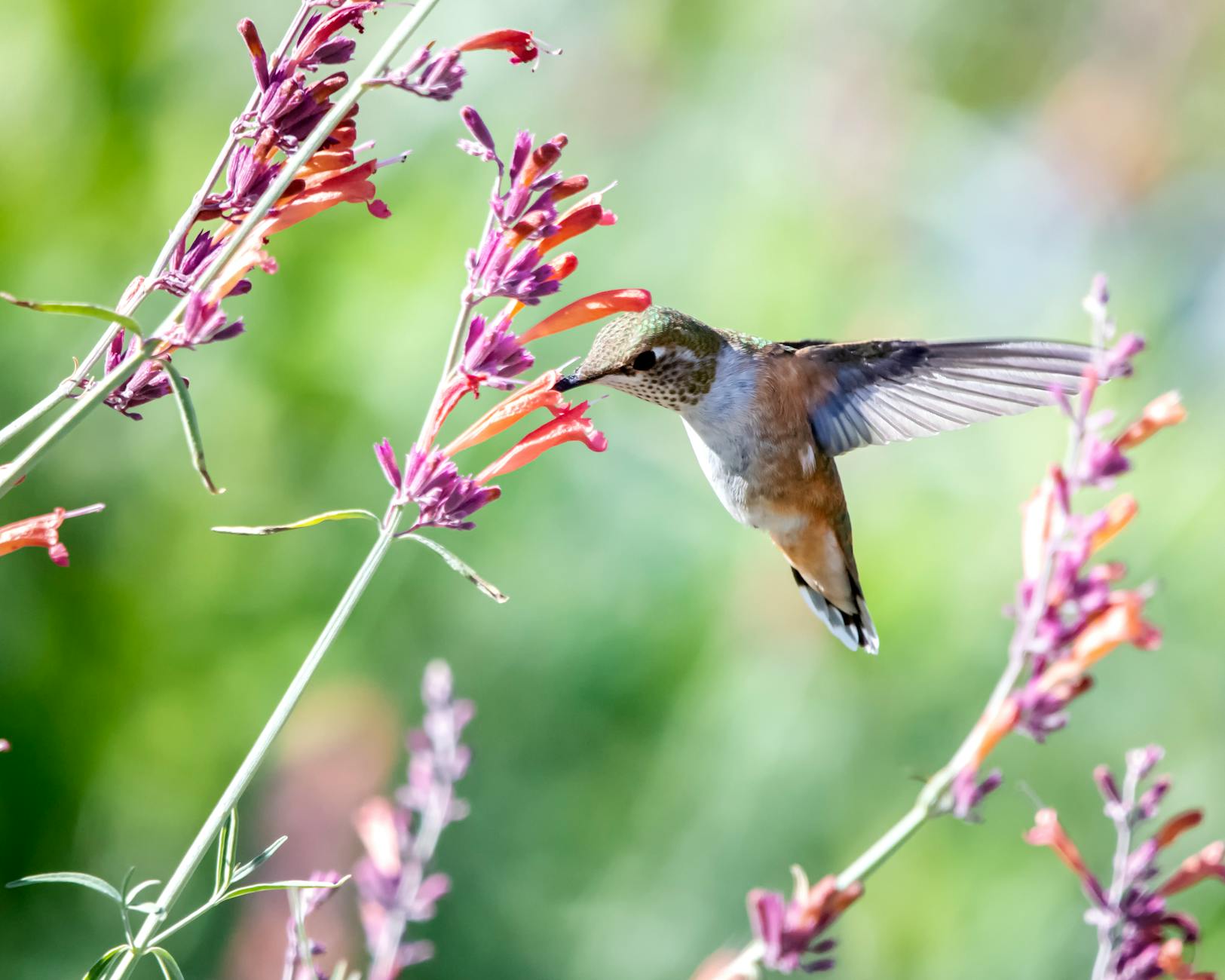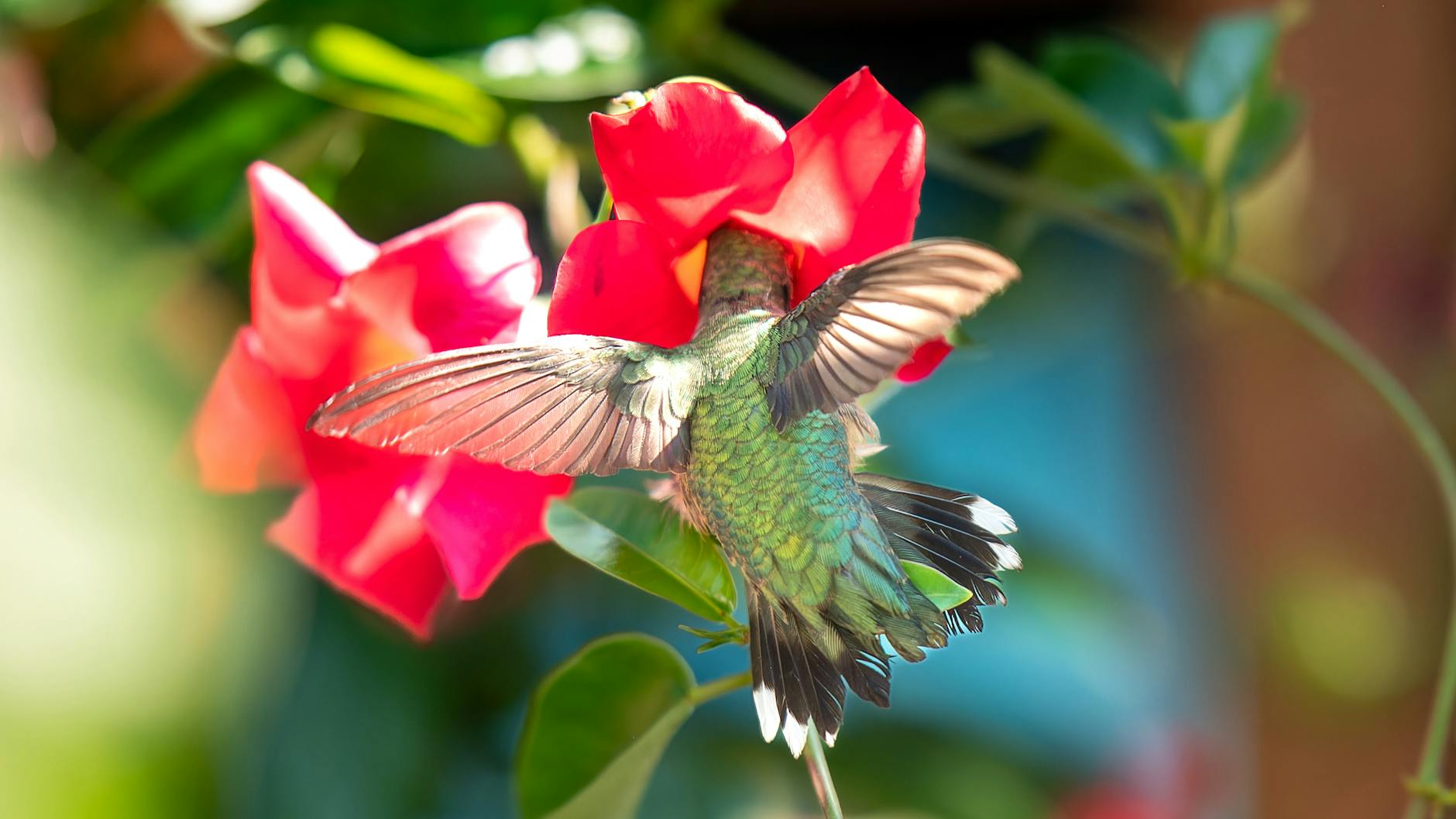How to Attract Hummingbirds to Your Garden: Essential Tips for Beginners
Picture your garden alive with the flutter of colourful wings and the sweet hum of hummingbirds. These enchanting birds not only add beauty but also play a vital role in pollinating plants. Attracting them to your garden is simpler than you might think.
In this guide, we’ll share essential tips for beginners on how to create a welcoming space for these fascinating creatures. From choosing the right flowers to setting up feeders, you’ll discover straightforward strategies that’ll enhance your garden and bring joy to your outdoor space. Get ready to turn your garden into a hummingbird haven!
Understanding Hummingbirds
Hummingbirds are fascinating creatures, noted for their vibrant colours and remarkable flying abilities. To create a hummingbird-friendly garden, understanding their behaviour, diet, and migration patterns is crucial. Let’s explore these aspects in detail.
Diet and Feeding Habits
Hummingbirds primarily thrive on nectar, which fuels their energetic lifestyle. However, their diet is more diverse than many realise. While they sip sugary nectar from flowers, they also consume insects and spiders, which provide essential proteins. In fact, experts suggest that up to 80% of their diet may consist of these tiny creatures, especially during breeding seasons when they require additional nutrients (How to Feed a Hummingbird Part I: Insects & Protein).
These industrious little birds will visit numerous flowers in a single day. On average, a hummingbird may visit over a thousand flowers and consume several times its body weight in nectar. To attract them effectively:
- Plant native flowers: Opt for plants like bee balm, trumpet vine, and salvia, which are naturally appealing to hummingbirds.
- Set up feeders: Use red-coloured feeders, as hummingbirds are drawn to this hue. Fill them with a simple mixture of four parts water to one part sugar.
- Keep feeders clean: Regularly change the nectar solution to prevent fermentation or mould, which can harm the birds.
Hummingbirds also need water to stay hydrated. Consider adding a birdbath or mister in your garden to provide fresh watering spots.

Photo by Chris F
For more information on what hummingbirds eat, you can check out this article: What (and How Often) Do Hummingbirds Eat?.
Migration Patterns
Hummingbirds are known for their impressive migratory journeys, often travelling thousands of miles between their breeding and wintering grounds. Most North American species, like the Ruby-throated Hummingbird, migrate south to Central America for the winter and return north in spring to breed (Hummingbird Migration Facts and Information | Birdfeeders).
Understanding their migration patterns can help you attract hummingbirds at the right time:
- Spring migration: Hummingbirds usually begin appearing in the southern U.S. around late March to early April. This is an excellent time to set up feeders and start planting flowers.
- Fall migration: As autumn approaches, they will begin to congregate in areas rich in food sources before heading south in late summer.
Tracking bird migration can be exciting. Resources like the Spring 2024 Hummingbird Sightings and Migration Map provide valuable insights into when to expect these visitors in your garden.
With this knowledge of hummingbird feeding habits and migration patterns, you’re better equipped to create an inviting environment for these enchanting birds.
Creating a Hummingbird-Friendly Garden
Creating a garden that attracts hummingbirds is a joyful endeavour. By choosing the right plants, arranging them wisely, and offering a source of water and shelter, you can create an idyllic environment. Here’s how to make your garden a hummingbird hotspot.
Planting Native Flowers
Selecting the right flowers is essential for drawing in hummingbirds. Focus on native plants, particularly those with bright red and orange tubular flowers, which are highly attractive to these birds. Here are some excellent options:
- Bee Balm (Monarda didyma): Known for its vibrant pink and red flowers, bee balm is a favourite among hummingbirds.
- Trumpet Vine (Campsis radicans): Its bright orange trumpet-shaped flowers are irresistible to hummingbirds.
- Cardinal Flower (Lobelia x cardinalis): The striking red flowers bloom throughout the summer, providing a vital nectar source.
- Salvia (Salvia spp.): Many varieties, especially those with red flowers, naturally attract these flying jewels.
These plants not only provide food but also create a beautiful and diverse garden. For more detailed lists of native plants that attract hummingbirds, check out this resource on nectar-rich natives for hummingbirds.

Photo by Frank Cone
Optimal Garden Layout
How you arrange your plants can significantly impact hummingbird visits. Grouping plants in clusters makes it easier for hummingbirds to locate food sources. Consider these layout tips:
- Group Similar Plants: Cluster plants with similar colours and flower types. This attracts hummingbirds and creates visual impact.
- Layer Heights: Place taller plants towards the back or centre and shorter ones in front. This not only optimises space but also creates a more open foraging area.
- Variety is Key: Including a mix of perennials and annuals ensures blooms throughout the seasons.
Creating a natural flow allows hummingbirds to navigate your garden more efficiently. For more ideas on garden design, refer to this helpful guide on pollinator garden design for hummingbirds.
Water Sources and Shelter
Hummingbirds, like any other wildlife, require fresh water and safe resting spots. Here’s how to provide these essentials:
- Bird Baths: Install a shallow bird bath with fresh water. Adding a drip or misting feature can enhance its appeal (How to Attract Hummingbirds With Water or Baths).
- Clean Water Regularly: Change the water frequently to keep it fresh and free of debris.
- Natural Shelters: Incorporate shrubs and trees into your garden design. These provide vital perching and nesting sites.
Incorporating these elements ensures that your garden is not only a food-rich environment but also a safe sanctuary for hummingbirds. For further insights on creating a hummingbird-friendly yard, explore this article on how to create a hummingbird-friendly yard.
Choosing and Maintaining Feeders
Selecting the right feeders for hummingbirds is essential for attracting them to your garden. They come in various styles, each designed to cater to the feeding habits of these beautiful birds. Additionally, maintaining cleanliness and proper nectar preparation will ensure that your garden is a safe haven for these visitors.
Types of Feeders
Understanding the different types of hummingbird feeders is the first step in attracting them. Here are the main options:
- Saucer Feeders: These feeders have a shallow basin. Nectar is poured into the dish, allowing hummingbirds to feed easily. Their flat design is often preferred as it reduces the chance of drowning.
- Bottle Feeders: These feeders feature a vertical container that holds nectar, releasing it through tiny holes as birds feed. They can hold more nectar at once, requiring less frequent refills.
When choosing a feeder, consider features that attract hummingbirds:
- Colour: Many hummingbirds are drawn to red, so select feeders with red elements.
- Perches: Some feeders have perches, allowing birds to rest while feeding.
For a detailed comparison of types, visit Hummingbird Feeder Types: Saucer vs. Vacuum.

Photo by DANNIEL CORBIT
Nectar Preparation and Safety
Making your own hummingbird nectar is straightforward and ensures it’s free from harmful additives. Here’s a simple recipe:
- Combine: Mix 1 part white granulated sugar with 4 parts water (for instance, 1 cup sugar with 4 cups water).
- Dissolve: Stir the mixture until the sugar fully dissolves.
- Cool and Fill: Let it cool before filling your feeder.
It’s crucial not to add red dye or any other additives, as they can harm the birds. For more details, check out this recipe on How to Make Hummingbird Nectar.
Cleaning and Maintenance
Regular cleaning of feeders is vital to prevent mould and disease. Here’s how to keep your feeders in top shape:
- Frequency: Clean feeders at least once a week, and more often in hot weather.
- Method: To clean, soak feeder parts in a solution of hot water and mild dish soap. For stubborn stains, use a mixture of vinegar and water (2 parts vinegar to 1 part water).
- Rinse: Ensure all soap and residues are thoroughly rinsed off before refilling.
Maintaining your feeders not only prolongs their life but also ensures a healthy feeding environment for hummingbirds. For a comprehensive cleaning guide, refer to How to Clean A Hummingbird Feeder.
Additional Tips for Success
Creating a thriving environment for hummingbirds in your garden involves some thoughtful considerations. Let’s explore various tips to enhance your success in attracting these delightful birds.
Seasonal Considerations
Adapting your garden to meet the seasonal needs of hummingbirds is crucial. As spring arrives, these birds return from their migratory journeys, seeking food sources to replenish their energy. Here’s how to make your garden a year-round haven:
- Early Spring Preparation: Put your feeders up a few weeks before hummingbirds are expected to arrive. This gives them a reliable food source as they return from their wintering grounds. For more insight into timing, check the Audubon’s guidelines on hanging feeders.
- Bloom Timing: Choose flowers that bloom at different times throughout the seasons. Selecting a mixture of annuals, perennials, shrubs, and trees ensures that there is always a source of nectar available. Research what flowers are best for different seasons, such as aster and salvia for fall. You can find more on this topic in the Acceptable Plant Species guide by MU Extension.
- Seasonal Clean-Up: In autumn, after hummingbirds have migrated, clean and store your feeders properly. This prevents mould growth and makes maintenance easier for the following spring.

Photo by Kendall Hoopes
Avoiding Pesticides
One of the biggest threats to hummingbirds is the use of pesticides in gardens. Chemicals that control pests may also harm the very creatures you wish to attract. Here’s what you should know:
- Dangers of Chemicals: Exposure to pesticides can significantly affect hummingbirds’ metabolism and overall health. Many common garden pesticides, including neonicotinoids, can slow down their metabolism and impair their ability to feed effectively (Hummingbirds are being harmed by the same pesticides killing off bees).
- Organic Alternatives: Opt for organic gardening practices. Natural pest control methods are safer for both hummingbirds and your garden’s ecosystem. Consider attracting beneficial insects that help control pest populations instead of resorting to harmful chemicals. Find more about how to create a safer space in this article on avoiding harmful pesticides.
- Education on Risks: Inform yourself on which products are harmful. Understanding the risks associated with certain chemicals will help you make informed choices for your garden. For specific insights, check out Protecting Hummingbirds from Insects.
With these additional tips, you can foster a vibrant garden environment that not only attracts hummingbirds but also contributes to a healthier ecosystem.
Common Mistakes to Avoid
Attracting hummingbirds to your garden can be incredibly rewarding. However, beginners often stumble upon several common pitfalls that can hinder their efforts. Understanding these mistakes allows you to create an inviting and effective environment for these beautiful birds.
Inadequate Food Sources
Having a variety of food sources is critical for keeping hummingbirds coming back. If you rely solely on feeders or a limited number of flowers, you might not provide enough nectar. Hummingbirds can be picky, and they require a diet rich in sugar and protein. Here are some common food mistakes:
- Relying on only feeders: Hummingbirds love flowers, so planting nectar-rich blooms alongside feeders ensures a more appealing environment.
- Not using the right nectar mix: The recommended recipe is four parts water to one part sugar. Be sure to avoid using red dye; it offers no benefit and can harm the birds (8 Hummingbird Feeder Mistakes You Should Never Make).
- Failing to change nectar regularly: Change the nectar every three to five days, or more frequently in hot weather, to prevent fermentation and ensure the birds have access to fresh food.

Photo by Mike Lensing
Poor Location of Feeders
Where you place your feeders matters just as much as what you put in them. Hummingbirds are skittish creatures and prefer locations that offer both visibility and safety. Here are some tips on feeder placement:
- Avoid direct sunlight: Position feeders in shaded areas to keep the nectar cool and fresh for longer.
- Consider nearby perches: Install feeders close to shrubs or trees where hummingbirds can rest in between feeding. This offers them a safe space from predators (Where to Place Hummingbird Feeders: 8 Tips).
- Visibility is key: Ensure feeders are placed where hummingbirds can see them from a distance, preferably near bright flowers. This will help draw them in and encourage frequent visits.
Understanding these common mistakes will help you create a hummingbird-friendly environment that keeps these delightful birds returning to your garden for food and shelter.
Conclusion
Attracting hummingbirds to your garden is a rewarding journey that can transform your outdoor space into a lively haven.
By planting native flowers, providing quality feeders, and maintaining a clean environment, you’ll create an irresistible sanctuary for these delightful birds.
Start implementing these strategies today and watch as your garden comes alive with the enchanting presence of hummingbirds.
Which tips will you try first? Share your thoughts and experiences in the comments below!










